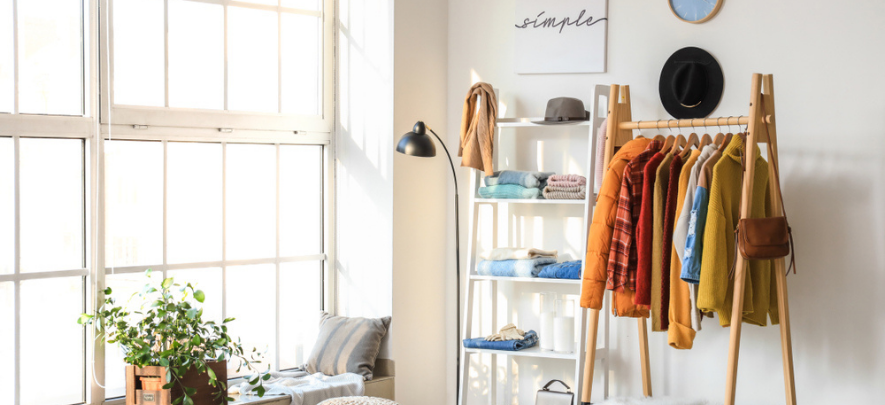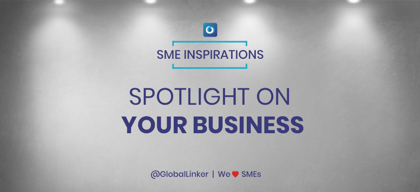Consider visual merchandising as silent selling

Retail
166 week ago — 10 min read
Kerry Meakin has 40 years Visual Merchandising (VM) and retail design experience in Ireland and the UK. She taught a VM Programme in Dublin Institute of Design for 10 years, and has delivered VM programmes throughout Ireland for County Enterprise Boards and for various retailers. The VM expert shares about the rising importance of Visual Merchandising in delivering delightful experiences and bringing back footfall to the stores.
Excerpts from an interview.
How has the pandemic changed the visual merchandising (VM) scene?
Due to the lockdowns, people who haven’t shopped online before are doing so now. So there’s a whole new cohort of online shoppers that wasn’t there before. And VM professionals have been working with online retailers, styling their products for photography so they can be posted online. Now with stores opening, stores have been busy upping their VM output.
Interestingly, in Ireland Penney’s (known internationally as Primark) did not offer online shopping during the lockdown. Instead, they used the time to promote their products on Instagram. So when their stores opened, they had unprecedented queues because they had built an excitement around their products.
People who haven’t shopped online before are doing so now. And VM professionals have been working with online retailers, styling their products for photography so they can be posted online.
What value does VM add to a retail business, beyond window dressing?
VM is about creating a store environment that’s conducive to consumers wanting to visit to browse and ultimately spend. So consider VM as silent selling.
To make the most of VM, retailers need to put a lot of consideration into their stores. Start with the storefront. Look at your signage, the fonts used, the branding. Simple things matter. Is your glass clean? Does the outside of your store look like you have pride in it? If you don’t have pride, why would anybody want to go in?
Inside, you need to cut down on the clutter. It’s also important to consider your fixtures and fittings. Their quality and design reflect the quality of your products. If you haven’t invested in decent fixtures and fittings, you are devaluing your products. We live in an era of sustainability… Can you revamp them? Sometimes just changing their colour gives them a completely fresh look.
Can you highlight some trends shaping VM?
One of the first trends which is going to happen even more now, is giving your customers an experience. Many retailers are turning to experiential merchandising with a goal to provide customers with a unique shopping experience that is better than anything they could get online.
Another big trend is giving customers an area in the shop to try out products, click photos and share on social media.
The other big trend is that of popup shops/displays—bringing something exciting for a short period of time in your store or take your store somewhere else for some time. London’s famous Carnaby Street has reinvented itself as a pop-up shop street. The entire street is full of popup shops doing interesting things. For instance, the My Runaway Group store by an award-winning youth empowerment organisation contained cutting-edge fashion, beauty, art and photography. They had morning Yoga classes, identity and mental health talks and gaming tournaments. Pop-up shops are usually about experiential retailing. Even Facebook had a pop-up shop at Carnaby Street, where people could talk to Facebook directly, ask questions.
Immersive experiences using technology such as virtual or augmented reality is another trend. Other trends in VM are bringing in local celebrities so customers can meet them and organising a class or a fun event. It all boils down to giving customers an experience. People are ready for this. It was already happening, now it will come in even quicker.
How can VM help retailers get the footfall back?
By offering experiences. Apart from that, decluttering the store. Get rid of as much older product as you can. Customers want clean spaces so that they can see things. Also by cross-merchandising and creating interesting sightlines for customers to see. Having focal points in the store such as a colourful display or a group of mannequins, or a well-merchandised wall will attract them. Think of the environment that you are asking people to come into.
When decluttering, how to strike a balance between too much and too less product?
Go with the old adage, less is more. Over-offering a product devalues it. A 100 or more of the same items on a table gives a subliminal message that this product is in plentiful supply and therefore is a common item. Consumers will walk away and forget about it. Whereas if you put 95 of those in the stockroom and leave only 5 on the sales floor, it gives a message that since there are a only few of these, this item is rare... I better purchase it before it’s gone.
It’s thinking of the psychology of the consumer. Restock in the morning and restock in the evening but don’t overstock your product. The top brands use simplicity when they present the products on their shelves and window displays. Reducing clutter and simplifying displays makes your customer focus on what really matters and help them decide what they should buy.
You’ve often emphasised the importance of creativity in VM. Can you throw some light on the topic?
Creativity comes from research. It is important to visit stores in your area and check out what your local competitors are doing. Perhaps now is the time for retailers to work together more than ever before, sharing ideas and experiences about what innovations have or haven’t worked for them. Don’t look at each other as competition but look at yourself and them as a community…we’re all in this together.
There is so much information available on the internet. There are a lot of digital experiences as well, lots of simple yet interesting things that retailers are doing globally that you don’t have to copy but be informed about. Look around and consider which of these ideas could work for you in your stores. The research will lead to creative thinking. It will inspire you.
Can you share some ‘out of the box’ ideas retailers are using to delight customers?
It’s interesting to see what some stores are doing. Stores by larger brands are becoming more conceptual. COS, for instance, has been working with some designers to put up interesting displays. Selfridges is offering lifestyle food and beverage consumption to complement product displays. Ralph Lauren is working on on-demand clothing. Selfridges, Zara and Lacoste are using QR codes on the products in their windows that has all the information on the products displayed. Zara had 3D mannequins appear on the screen showing how each garment looked.
Which are your favourite brands that do good VM?
Selfridges, Anthropologie and Massimo Dutti. Then again Zara spends a lot of time dressing each mannequin. In Homewares, Ikea. I like the way they use their spaces. They use very little signage. It’s all about going into the space and knowing where things are because they use the height for repetition of the product. What they do is clever. Their cross merchandising in room sets is absolutely outstanding. Every home store needs to look at the way they do things. The don’t sell an item, they sell the room…the lifestyle.
Advice for retailers, considering the fundamentals of window display?
Your windows are the best free advertising you will have. So spend time considering how you’re using that space. You need to draw attention. How do you do that? Again, it’s about research. Again, think of sustainability.
A fantastic example of this is the store Anthropologie, the props they make and the things they do with their windows. Your display window is the personality of your store. It’s telling people what kind of store you are and what your personality is. There are a lot of different things that you can use and change through the year— festivals, occasions, or things that are happening globally or locally. It helps to see what stores like Anthropologie and other big stores are doing. Maybe use a dash of humour. For instance, Harvey Nichols had nothing in their windows, only a big huge sign that said ‘Bah Humbug!’ quoting dickens and expressing how we all felt. So think of that space and use it really wisely.
Any other advice?
It’s been a tough year, don’t rush into anything. Take some time to reflect on where your business is. Plan before you act. Use experts to help you wherever required. It may cost money now, but will pay off in the long run. Use this time as a chance for change. It’s an opportunity to make retail more exciting. It’s a time for retail to revamp, revise, metamorphose and come out at the other into being something that is much better than it was before.
Also read: Roadmap to adaptive retail
Image source: shutterstock.com
Article published in STOrai Magazine. Interviewed by Dr Hitesh Bhatt - Editorial Director – STOrai. He is also Director of Marketing and Communication at RAI.
Disclaimer: The views and opinions expressed in this article are those of the author and do not necessarily reflect the views, official policy or position of GlobalLinker.
View STOrai 's profile
SME Inspirations
Other articles written by STOrai Magazine
Enhanced Brand Storytelling in the Digital Age
29 week ago
Most read this week

















Comments
Please login or Register to join the discussion